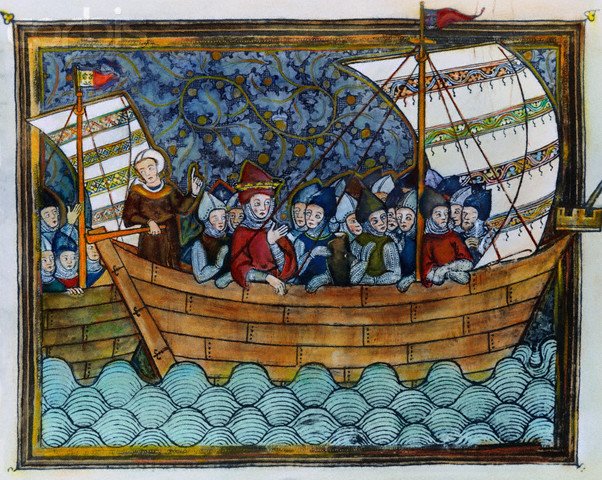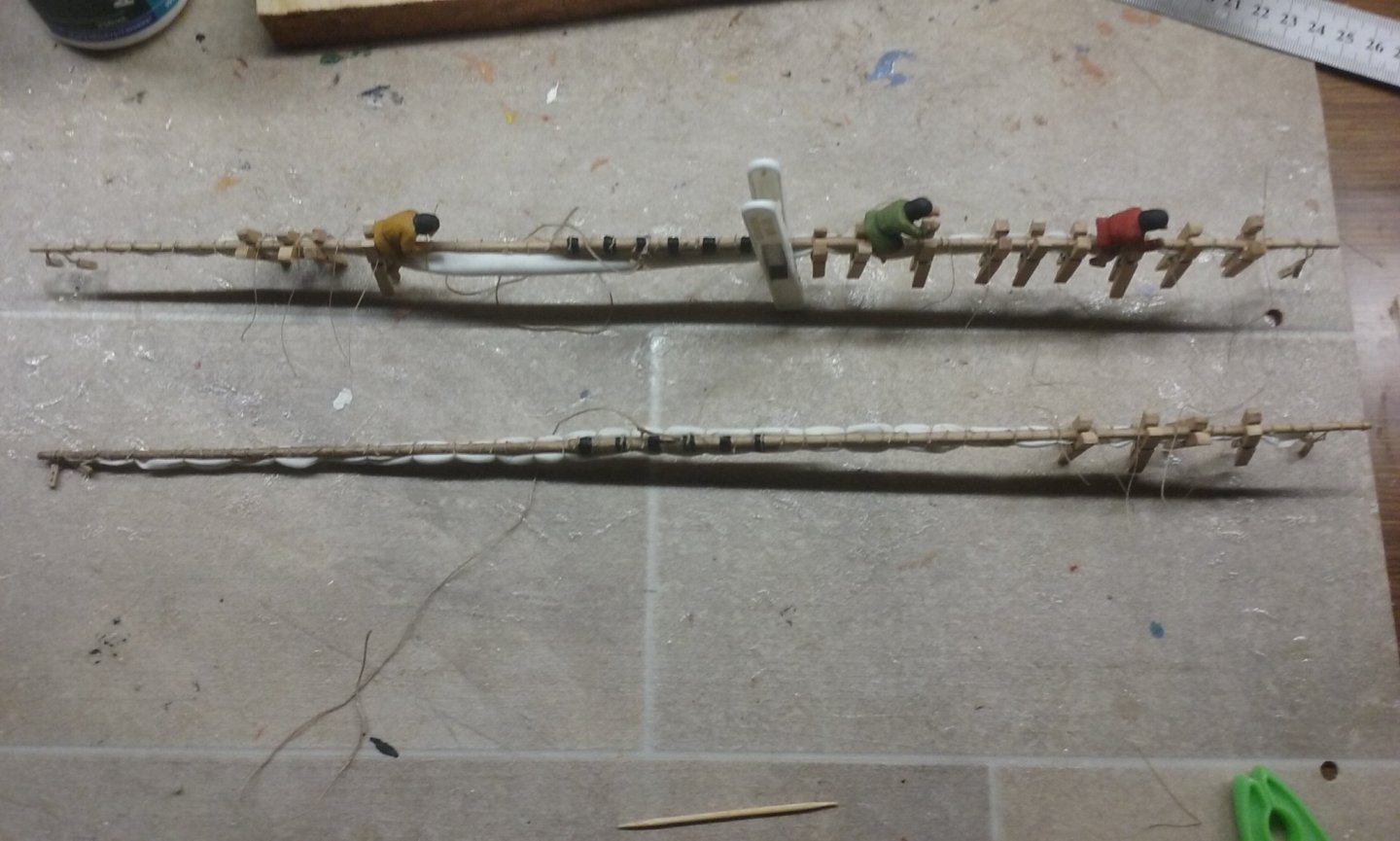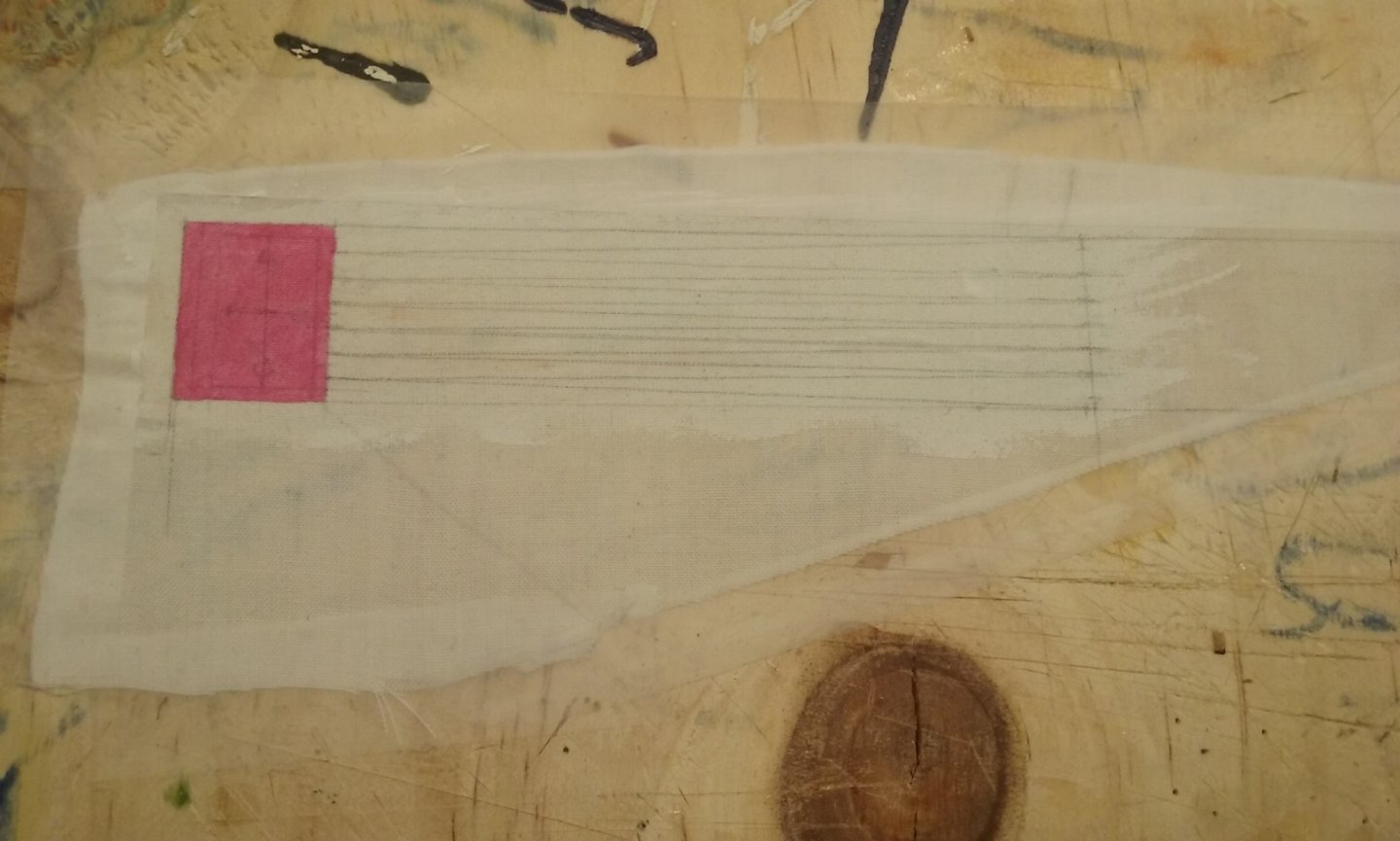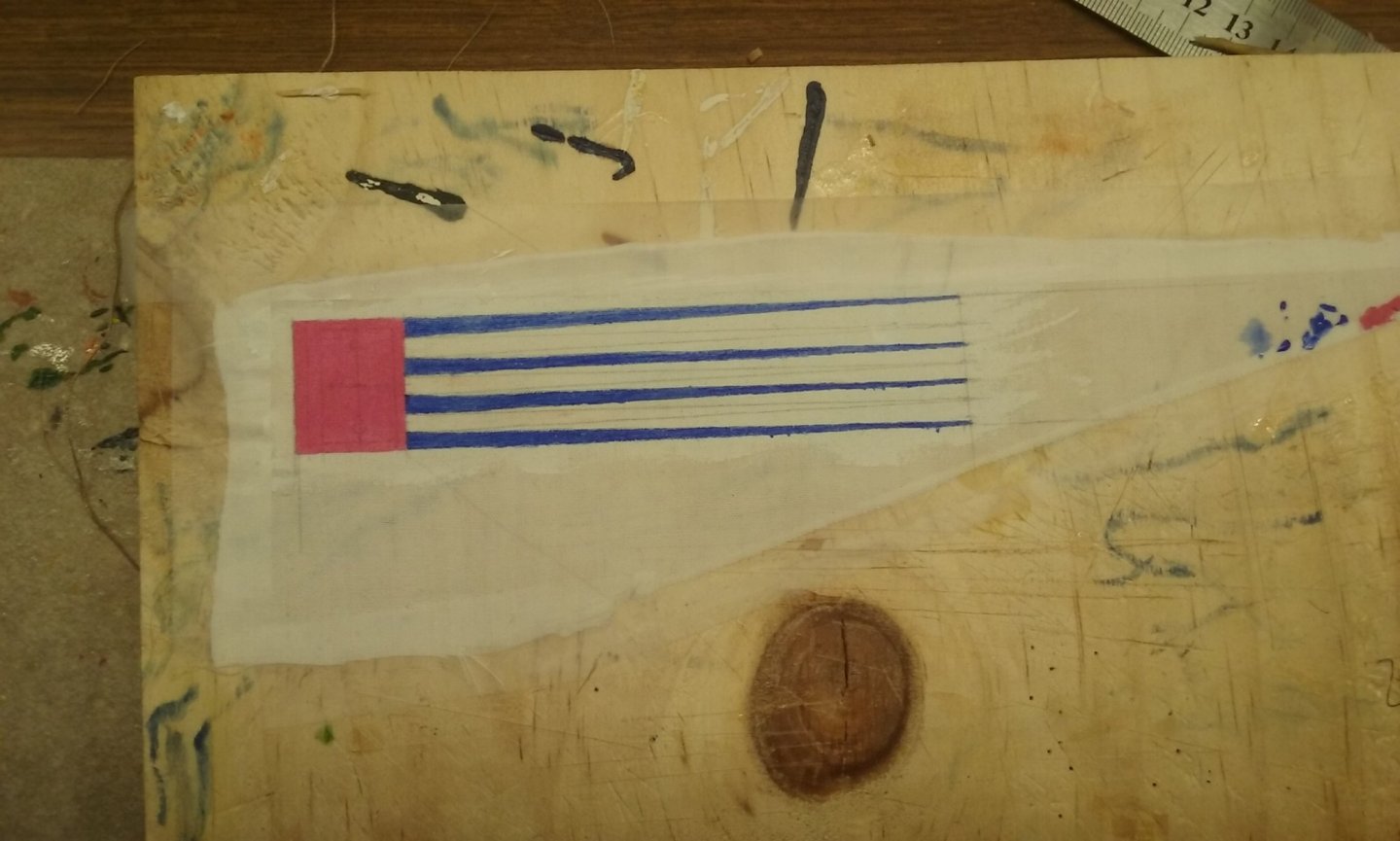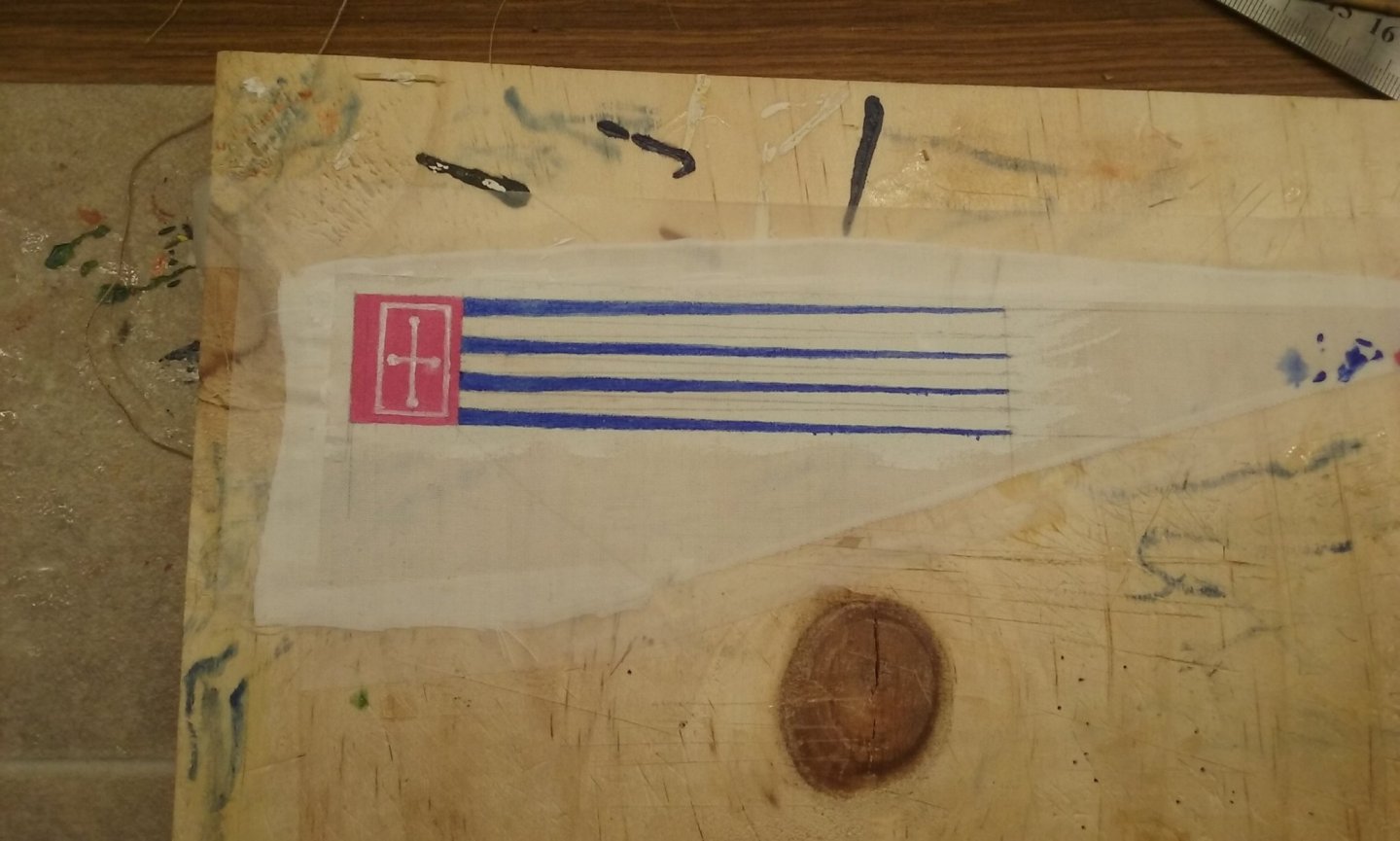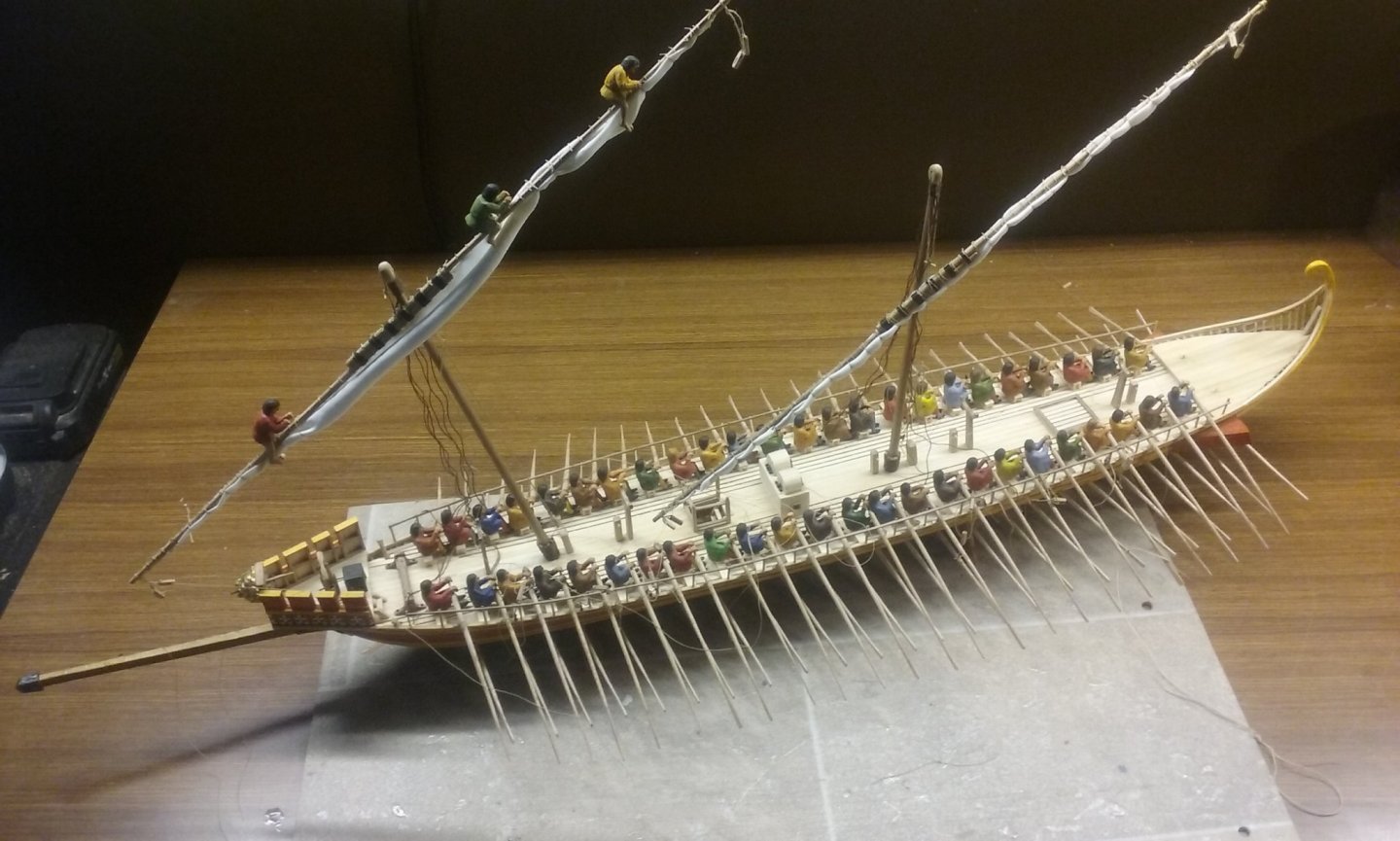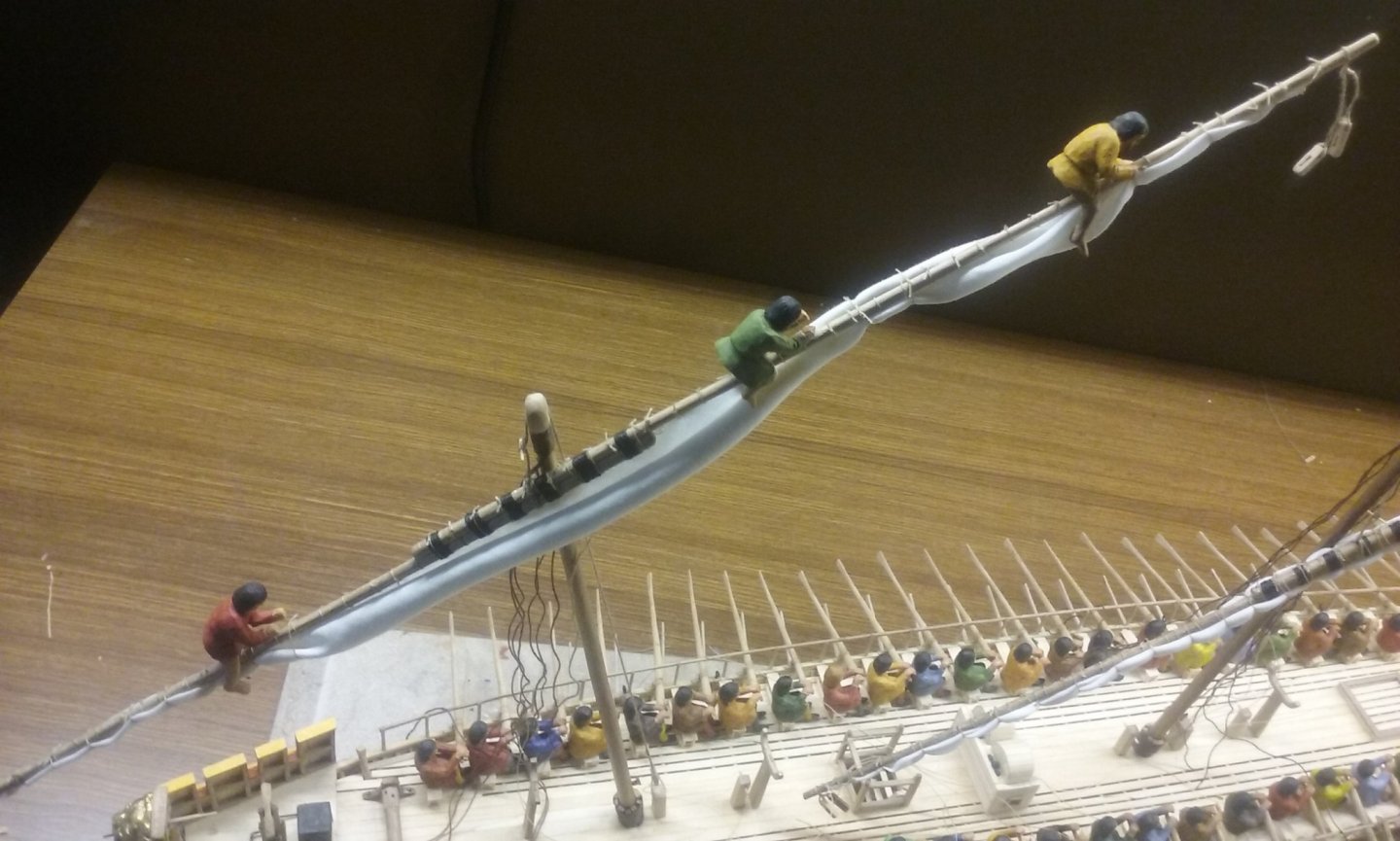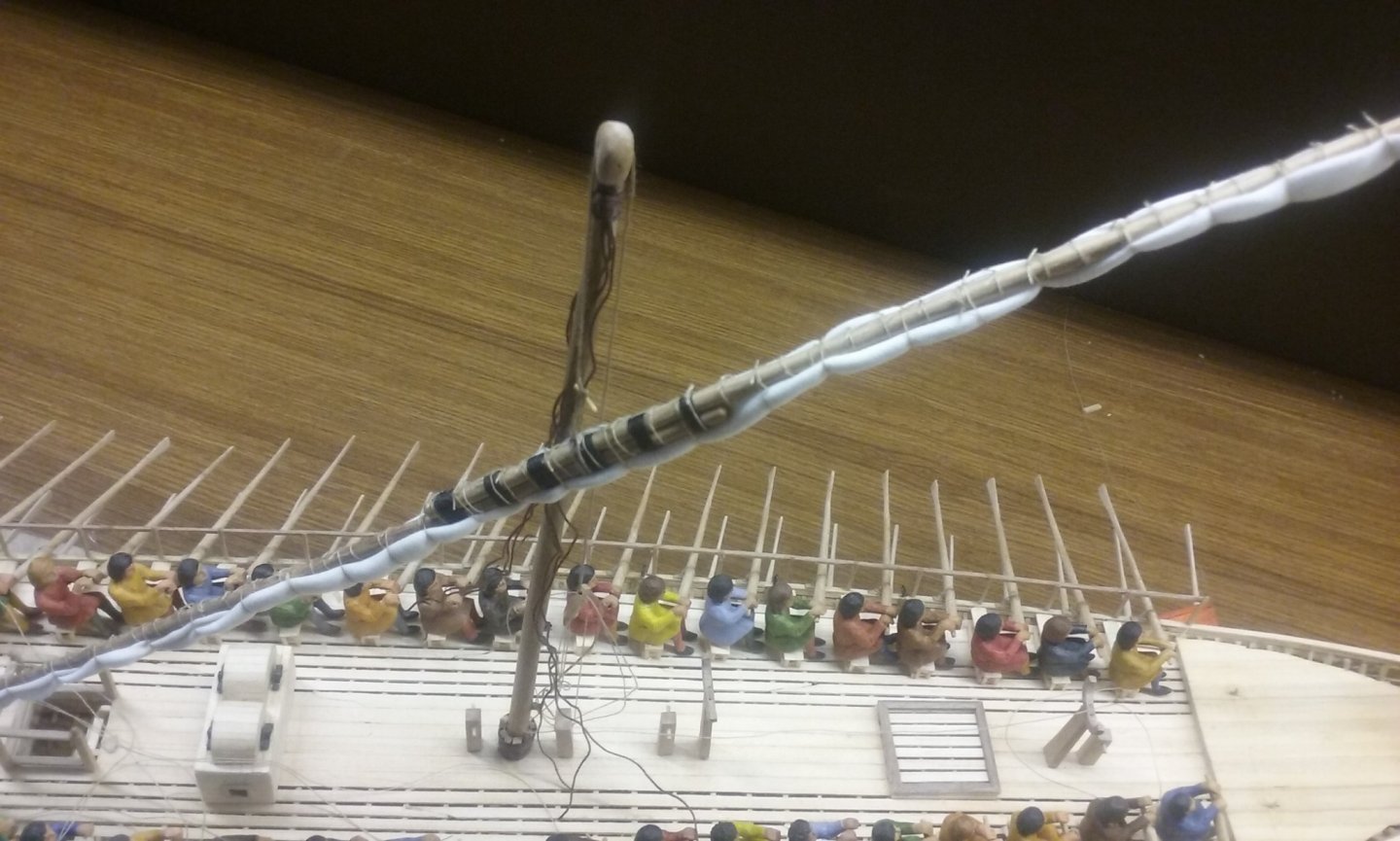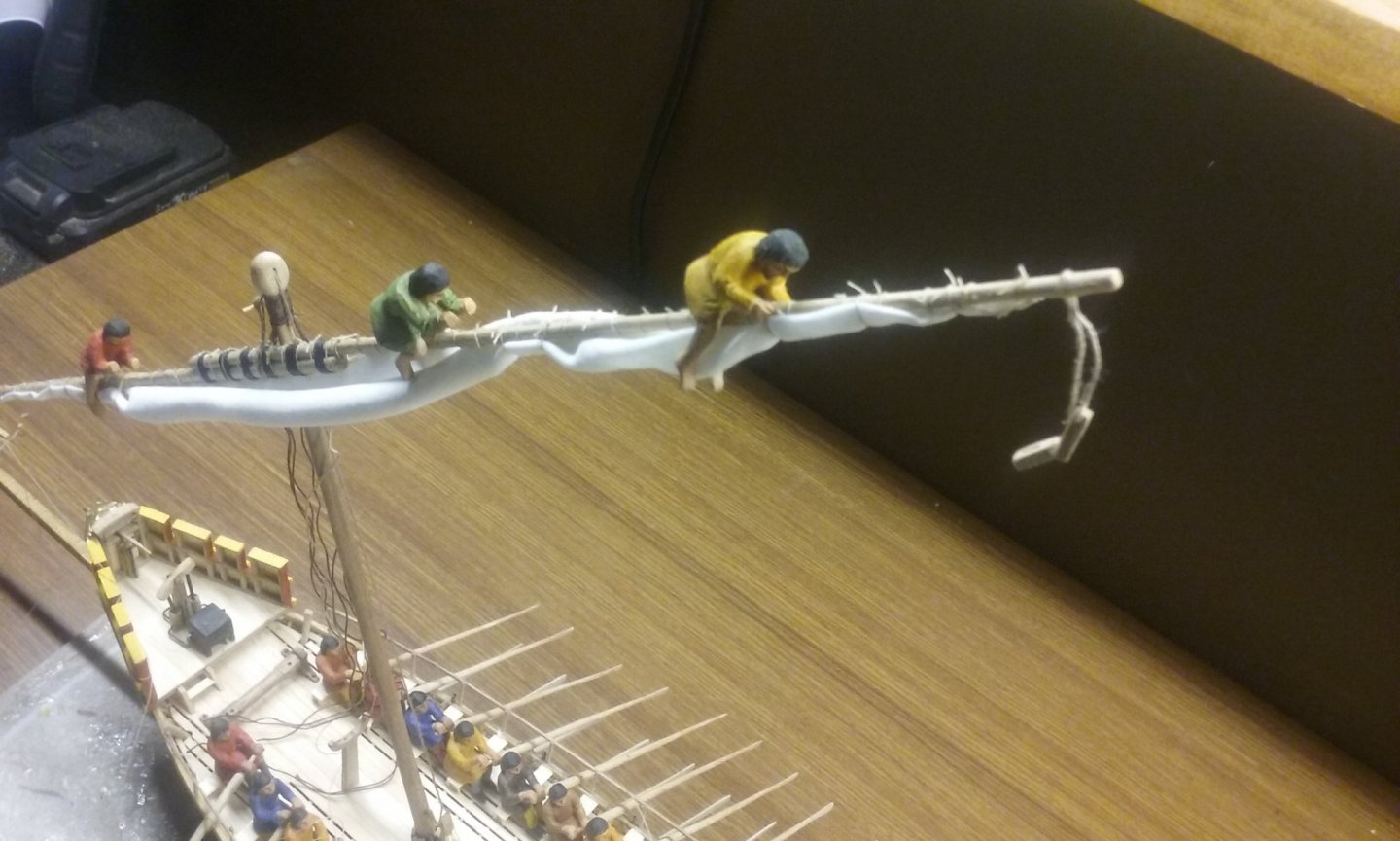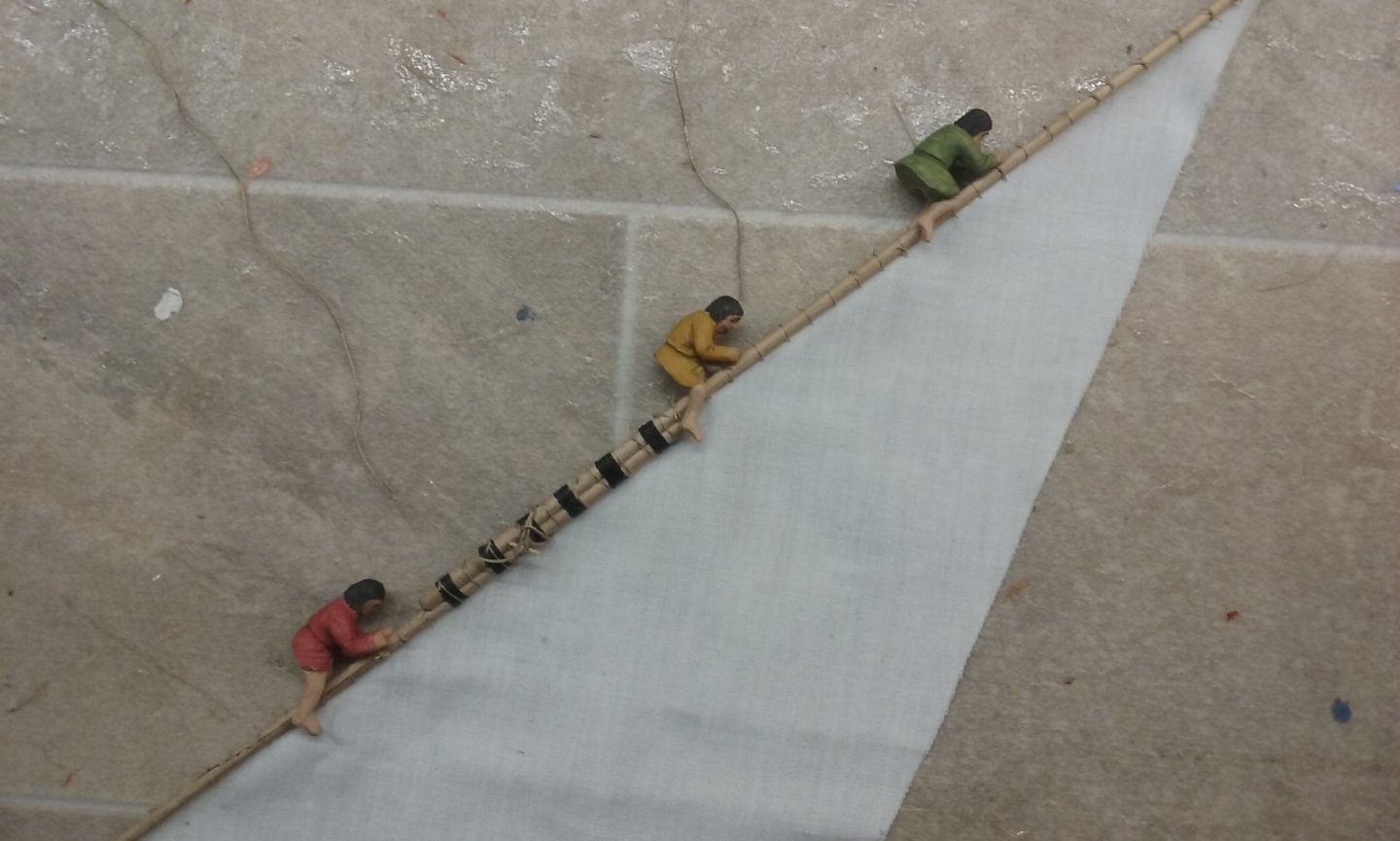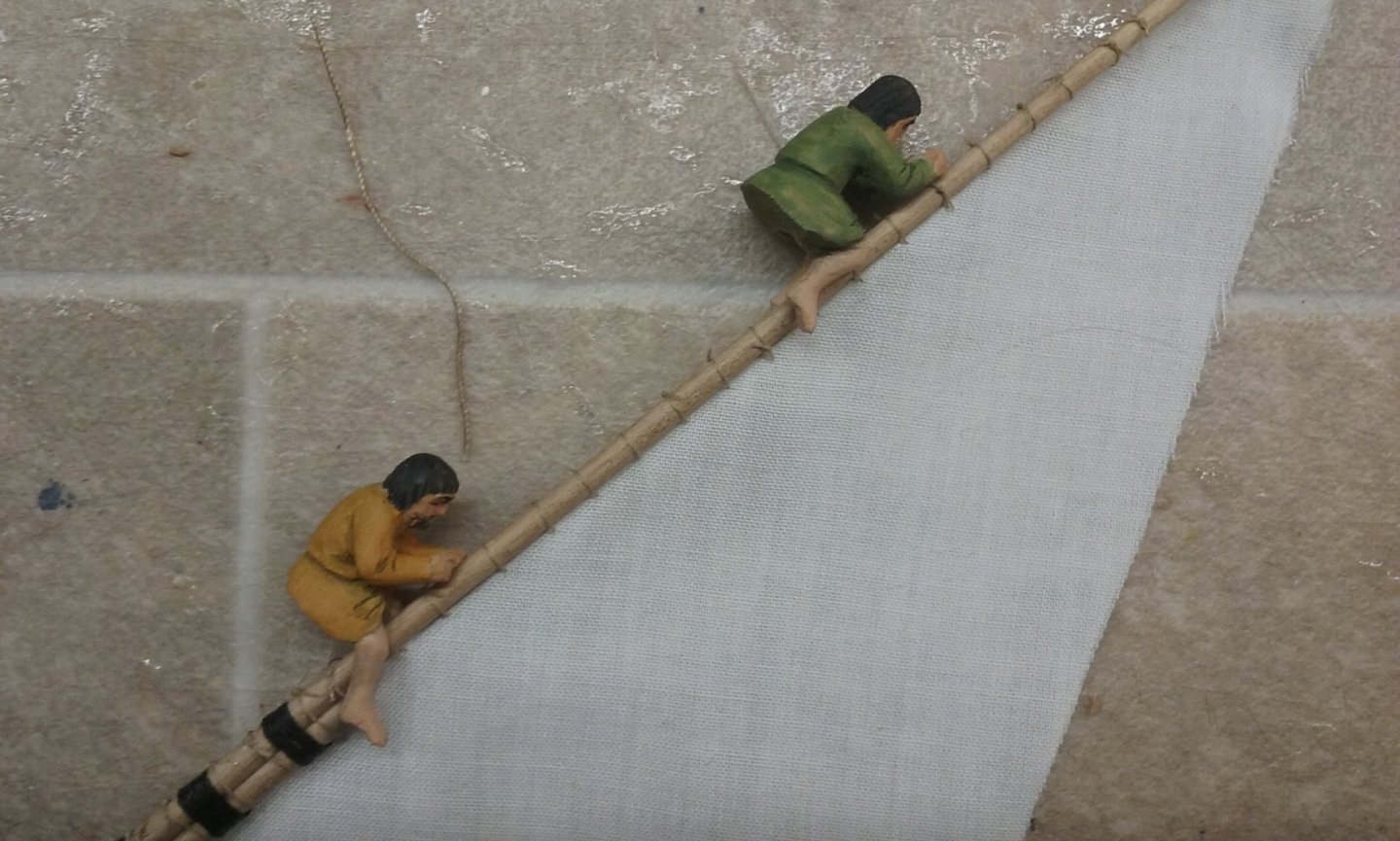-
Posts
7,985 -
Joined
-
Last visited
Content Type
Profiles
Forums
Gallery
Events
Everything posted by Louie da fly
-
There are pros and cons for both. Naturally staining/painting everything beforehand means don't miss any corners, and you don't get the problem that blobs of glue resist the stain. But I believe there can be problems with adhesion of glue over stain or paint. I normally construct and glue, and then paint - but that's just me - most of the time. And I don't use stain.
-
Beautiful work as usual, Dick. Good to see work on this hasn't been snarked by the incredible hulc.
-
This is a beautiful build. Nice to see so many mediaeval craft getting built, and it makes a nice change from the ubiquitous Viking ships (much though I like them, a bit of variety is a good thing). As far as minor errors in alignment go, they certainly don't leap out at you - it's a very good looking model. Not sure I'd want to try working in card- I think wood is a lot more forgiving. Actually, no. Contemporary pictures of cogs quite often show them as quite light colour, suggestive of pine: Though others are somewhat darker:
- 175 replies
-
- hanse kogge
- shipyard
-
(and 1 more)
Tagged with:
-

3d printing crew figures
Louie da fly replied to highlanderburial's topic in 3D-Printing and Laser-Cutting.
This is so good. Having just hand-carved 48 mediaeval Byzantine oarsmen (nobody makes and sells these!) for my 1:50 scale dromon out of pear wood, I could have done with this technology. Don't get me wrong, I enjoy carving, but that was rather more than I'd been wanting to do . . . -
That's really fascinating, Dick. I suppose there's no good reason not to have reverse clinker, unless it caused structural problems somehow. It would be interesting to know what happens at the transition between reverse clinker and the rest.
- 186 replies
-
- keelless
- reverse clinker
- (and 4 more)
-
Thank you George. It's always been an area of uncertainty for me. I normally bypass the problem by writing dromons, but there's always that niggling doubt that I'm doing the right thing with it . . . I learnt Ancient Greek for a year about 20 years ago, with the idea of using it to read Byzantine manuscripts. I enjoyed it very much and I wish I'd been able to go on but life got in the way, so I never had a chance to get back to it. I got to use it only once - I was in Athens at the base of the acropolis. There was a tiny church there made of bits of marble and discarded stone. I asked a workman "What church is that?" (τις εκκλησίας? - Ancient Greek, remember) and he answered Άγιος Γεώργιος (Saint George). Big triumph for me - actually got to have a conversation (no matter how short) in Greek! There's been movement at the station. I've attached the sails with robands and furled them - the after sail completely furled and the foresail in the process of being unfurled. Topmen dry fitted. And here they are in place. The fore halyard is pretty much done and the truss which holds the yard to the mast is in place. (I tried this out a couple of months ago to see if I could do it and had a lot of trouble -it all seemed so complicated. But I must have absorbed the information because this time it was quite easy.) I still need to do more work on the after yard. Here's the fore yard, with the topmen undoing the gaskets. It's occurred to me that it would probably be good policy to undo the central gaskets first, to get access to the sheet - so it didn't fly around out of control when the whole sail was unfurled. And the after yard in the process of being hoisted. When the model is displayed that's how it will be, with the yard halfway up the mast and the other guys I carved hauling on the halyard. Still quite a lot to do. I have to work out the belaying for the tacks - it looks like they need to pass through an "open" fairlead a fair way in front of the mast (to control the front end of the yard in normal sailing conditions) and lead to a ringbolt or something aft of the mast, so the yard can be pulled back far enough to pass behind the mast when tacking. I also have to do the vangs at the other end of the yard and work out where to belay them. I know standing rigging usually goes up first, but I'm leaving the shrouds till after all this is done - I think that will make the work easier, so they don't get in the way while I'm working on the rigging for the yards. And I've started making the new (cloth) banner to replace the metal foil one that self-destructed a few months ago. After my experience with cutting out the sails, this time I taped the fabric to a bit of board before I started. I'll cut it to shape after I've finished painting. I'm using acrylics, which worked well when I made the awning for the poop. I first painted the whole thing with white acrylic so it wouldn't "bleed", and I was pleasantly surprised to find the pencil marks still showed up, I've done two coats of pink and one of blue and of white. I'll add another blue coat and go over the white border and cross again. Then I'll do the red for the other "tails". I'm hoping after all that it won't be too stiff to put a "wave" in it so it looks like it's fluttering.
-
True, but obviously not impossible, as the black and white photo above shows. Anchor cables, yes. Nippers? I doubt it, but how they did raise the anchor I don't really know. I've put a windlass on the foredeck just aft of the forecastle (pseudopation), but I've no idea how that would all work. Anchors of the time were not very heavy - the ones recovered from the approximately contemporary Serce Limani wreck weighed between 47 and 67 kg. The Serce Limani ship was a merchantman about 15metres long - about half the length of the dromon, but perhaps approaching its overall weight as a dromon had to be very lightly built so the oarsmen could actually get it to move. You could be right, though my guys don't really fit that description . . . Still, it gives me an excuse not to empty those oarbenches. (Dromai, I think, but I'm not sure. The second "o" of the word dromon is the long "o" - omega, not the short "o" - omicron, which indicates the word is "running" rather than "runner". So the usual rules for making plural nouns, (where the plural would be dromoi) presumably don't apply. Perhaps more information than you needed.). No information on brailing. There are very few contemporary representations of dromai under sail and they are so oversimplified that I'm pathetically grateful they even show shrouds - they don't show tacks, vangs or sheets so it's probably asking a bit much to expect them to show brails . . .
-
That conjures up a mental picture that will give me bad dreams for weeks . . . Are you thinking what I'm thinking B One? I think so B Two . . .
- 186 replies
-
- keelless
- reverse clinker
- (and 4 more)
-
Hi Ron, Just found your build. No posts since June, though. How's it all going? Going well, I hope.
- 16 replies
-
- constitution
- BlueJacket Shipcrafters
-
(and 1 more)
Tagged with:
-

For Beginners -- A Cautionary Tale
Louie da fly replied to ccoyle's topic in New member Introductions
Gazzarian, that Drakkar is not too bad at all, though I do wonder about that mark on the front of the sail - is that one of the bloodstains? You might like to have a look at this when choosing your next build - these have been vouched for as suitable for beginners, and shouldn't cause too much pulling of hair. In some ways it's therapeutic to make all these mistakes when starting out - it brings a certain measure of humility and patience (don't ask me how I know), and the realisation that sometimes the instructions are actually worth following, at least some of them. To be honest, the clinker planking on the drakkar involves a fair bit of difficulty in its own right. The fact that you got it reasonably right is a credit to you, particularly with the less than adequate instructions. When you start your next build make sure you start a build log as well - it will give you access to the help, advice and encouragement of this amazing group of people. And occasionally commiseration when an error occurs that can't be remedied in any way (and though most mistakes can be fixed - wood is a very forgiving medium - they do happen once in a while and you just have to put it down to experience and resolve never to repeat that particular mistake.) And every model you make will be better than the previous one. The members here are of all levels of skill, from total beginners to those who are demigods of ship modelling, and everything in between. And the demigods were once beginners themselves and probably made some pretty ghastly mistakes when starting out. Just keep at it and have fun with your modelling - that's the whole reason we do this stuff. -
Damn! I was going to say that! I do wonder whether the author might have included the "mouth"meaning of os as an extra pun (or pune) additional to "port". In the immortal words of Led Zeppelin "You know sometimes words have two meanings". Back to the actual subject of the thread (i.e. building a model of a "hulc" , whatever that may be) are you planning to put castles on it? Additional to the reverse clinker and lack of stem and sternposts these seem to be a common feature, though never specified in academic discussions.
- 186 replies
-
- keelless
- reverse clinker
- (and 4 more)
-
Well, this is a nice little foray into Mystery, Ancient and Modern, with Seography . . .
- 186 replies
-
- keelless
- reverse clinker
- (and 4 more)
-
Yes, that's a good translation - as I see it, the idea of the inscription is a play on words, that it's appropriate to put a hulc on the seal of Hulkesmouth. Aha! New thought! Even better! Signo is "I signify" or "I show", vocor is "my name is" and os is "mouth" so perhaps it should be "By this hulc and [the word] mouth I show that my name is the same as this worthy name (i.e Hulkesmouth), so yes it's actually a much cleverer pune or play on words than any previous translation has made clear.
- 186 replies
-
- keelless
- reverse clinker
- (and 4 more)
-
I only just came across this - https://www.nationalgeographic.com/magazine/2009/10/shipwreck/ A Portuguese nau, the Bom Jesus, shipwrecked on the African coast in the 1530s with a cargo including elephant tusks and gold coins - but it was discovered 12 years ago and the report is from 10 years ago. How do we miss these things? By the way, the page includes a slideshow; one of the slides is of what appears to be a halyard knight, though it may be for another purpose because it only has two sheaves.
-
Hi and welcome, Pipe Major. There are quite a few build logs for this model. Go to the search bar at the top right of the page and type in Corel Vasa (or Corel Wasa might help, too) and you should be able to find a lot of information. And I'd highly recommend you start a build log (instructions here) It's the best way to get help and advice when you hit problems. If the instructions are a bit too basic, I expect others have encountered that problem as well and should be able to help.
-
Just had to make sure they were decent, with those skirts tucked up like that. And to answer the question "was anything worn under the tunic?" the answer is of course "No, everything's in perfect working order!"
-
Welcome Daniël. Certainly open a build log for the model. If you can, add pictures of the earlier steps in the build, leading up to its present state. But if you can't then just start from there and continue. I grew up in Western Australia and the Batavia is part of our local history. There's quite a large section of her stern in the Fremantle Shipwreck Museum,along with cannons and other artefacts, plus even the stones for the gateway of the fort at Batavia (modern Djakarta) which she was carrying when she hit the rocks. Have fun with the Victory. And when you're finished, maybe you can start on the Batavia.
-
Welcome, Seaforth. The Vasa is a pretty ambitious model to undertake, but as you've already done a Titanic you're probably up to it. There are (as you're probably already aware) quite a few differences between plastic and wooden models - particularly the planking. But there's plenty of advice and tutorials available to help you, and the members here are also very valuable sources of help. When you start your build log, ask for help with the bow section. I'm sure someone who's already been there will be happy to help.
-

Newbie from Chino Hills, California
Louie da fly replied to tomsimon's topic in New member Introductions
Welcome, Thomas. You've chosen a very attractive model to start on. There are several build logs for this kit already on MSW. Just do a search (top right corner of the page) for Vanguard Fifie and they'll come up. They should help you with problems you may encounter as you go. And do start a build log of your own -it's the best way to get help, advice and encouragement from those who've been there before. And we get to see an attractive model being built. The instructions for starting a build log are here: Have fun with it! -
I don't know much about all this but it seems to me that painting over the existing mess would be a very bad idea - it would be far better to remove it and start again.
-
Not a Latin speaker at all, but as I read it: hoc [this] hulci [hulc] signo [signifies] vocor os [by word of mouth] sic [thus, such] nomine [name] digno [worthy] My nearest guess would be "This word hulc sounds like that worthy name" (the "worthy name" is Hulkesmouth, the name of the town)
- 186 replies
-
- keelless
- reverse clinker
- (and 4 more)
-
Thanks everybody for the likes, and thanks for the comments, Liteflight. However I need to point out that there's an older meaning for bodging, but even more irrelevant to the present case (I see your pedantry and raise it). In Tudor times a bodger was someone who pulled old garments apart and re-made the fabric into new garments. But I was using the broader Australian meaning mentioned by Banyan above: "to tie a few parts together with fencing wire and you will have a true Aussie creation" The little guys are carved from pear wood from our neighbour's tree, from small branches that have been sitting under the house for a few years. This time I didn't use sawdust and glue - the gunge was (barely) adequate to glue to; in fact its consistency was very similar to that very sawdust and glue that you asked about (Oops! Ended a sentence with a preposition). Here are the three topmen painted and ready to go. Note that they've taken off their shoes and hose to improve grip as they climb the yard (I do this when I go up on the roof of our house, for the same reason). I've made their legs paler than their hands and faces because they're usually covered so they haven't got tanned. The man in the red tunic is the one with the dodgy leg; it's not perfect but not too bad. I can always tell myself he had a childhood accident and his leg healed crooked. And I've tried a little shading, having been inspired by the soldiers in Old Collingwood's Waterloo diorama. And here they are dry fitted to the yard. I have to furl the sail and hoist it before I can put them in place permanently. Note the shallowness of the sail, which stops it looking too full when furled. Now I have to decide whether to remove the 8 oarsmen furthest aft and put their oars in storage along the benches - because the original idea was that those would be the guys pulling on the halyard and unfurling the sail, so their benches should be empty. Otherwise there are extra crew members who only work when under sail, and I can't see them doing that when there are plenty of big strong men pulling the oars who could be temporarily re-purposed.
About us
Modelshipworld - Advancing Ship Modeling through Research
SSL Secured
Your security is important for us so this Website is SSL-Secured
NRG Mailing Address
Nautical Research Guild
237 South Lincoln Street
Westmont IL, 60559-1917
Model Ship World ® and the MSW logo are Registered Trademarks, and belong to the Nautical Research Guild (United States Patent and Trademark Office: No. 6,929,264 & No. 6,929,274, registered Dec. 20, 2022)
Helpful Links
About the NRG
If you enjoy building ship models that are historically accurate as well as beautiful, then The Nautical Research Guild (NRG) is just right for you.
The Guild is a non-profit educational organization whose mission is to “Advance Ship Modeling Through Research”. We provide support to our members in their efforts to raise the quality of their model ships.
The Nautical Research Guild has published our world-renowned quarterly magazine, The Nautical Research Journal, since 1955. The pages of the Journal are full of articles by accomplished ship modelers who show you how they create those exquisite details on their models, and by maritime historians who show you the correct details to build. The Journal is available in both print and digital editions. Go to the NRG web site (www.thenrg.org) to download a complimentary digital copy of the Journal. The NRG also publishes plan sets, books and compilations of back issues of the Journal and the former Ships in Scale and Model Ship Builder magazines.




